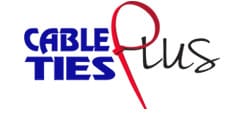Heat shrink tubing isn’t glamorous, but it’s one of the hardest-working tools in an electrician’s arsenal. You’ll find it deep in engine compartments, snaking through control panels, and clinging tightly to delicate terminations. It helps hold the line against abrasion, moisture, and mechanical stress. It’s a quiet force of reliability in systems where failure isn’t an option. The more you work with it, the more you realize that the right tubing, properly applied, is the difference between an installation that merely works and one that endures.
How Do You Choose the Right Wall Tubing for Your Application?
Experienced users understand that wall thickness matters, especially when the project involves unique physical or environmental demands. Thin wall tubing is ideal for compact assemblies with limited space and critical flexibility. It provides just enough insulation and abrasion resistance without adding unnecessary bulk.
On the other hand, dual wall or adhesive-lined heat shrink tubing offers the benefit of an inner adhesive lining that melts and flows during heating, creating a tight seal around wires, terminals, or splices. This is especially valuable in marine, automotive, and industrial applications where environmental sealing against moisture and contaminants is non-negotiable.
Understanding these distinctions is essential. While single-wall tubing may suffice in indoor, low-strain environments, dual-wall options ensure superior performance where temperature swings, chemical exposure, or mechanical vibration threaten system integrity.
Performance Features That Work Harder
All heat-shrinkable tubing is not created equal. Material formulation plays a pivotal role in its durability and resistance properties. Tubing made from cross-linked polyolefin is often preferred for general electrical insulation due to its flame retardant, chemical resistance, and flexible characteristics.
However, more specialized applications might demand tubing constructed from fluoropolymers or elastomeric compounds that can withstand extreme temperatures, exposure to fuels, or prolonged mechanical stress. These high-performance materials extend protection in aerospace, defense, and heavy equipment industries.
Don’t overlook strain relief, either. When used properly, heat shrinkable tubing can prevent flex-induced damage to solder joints, joints and terminals, and sensitive conductors. Over time, this reduces maintenance demands and improves the safety of critical systems.
Understanding Fit, Function, and Finish
One of the most common oversights among even experienced installers is underestimating the importance of shrink ratios. A standard 2:1 shrink ratio may work well for uniform wiring or components. Still, more complex geometries may benefit from 3:1 or even 4:1 tubing that accommodates large disparities between the expanded and final diameter.
Improper shrink fit can lead to compromised insulation or incomplete sealing, particularly when dealing with connectors, color coding, or bundles with varying diameters. Technicians should also consider the heating source used for shrinking the tube. A uniform heat source, such as a temperature-controlled heat gun, ensures even shrinkage and a professional finish.
The Hidden Benefits of Color and Variety
While often considered cosmetic, the variety of color options in heat shrink tubing is critical in color coding circuits, phases, and systems. This color coding is especially advantageous in large-scale electrical panels, data centers, or network systems where clarity is key to installation and maintenance.
Color-coded tubing speeds up diagnostics and reduces errors during expansions or repairs. On the other hand, clear tubing allows for visibility of printed markings or inspection of underlying components, offering yet another layer of strategic utility.
Don’t underestimate the value of having a wide range of tubing sizes, types, and wall thicknesses in your inventory. From delicate sensor leads to heavy-duty cable harnesses, having the right fit on hand allows you to address virtually any insulation or sealing requirement on the spot.
Where Does Heat Shrink Tubing Excel in Real-World Applications?
From underground cable splices to industrial control panels, heat shrink tubing proves its worth daily. Installers working in humid or dusty environments rely on adhesive-lined tubing for its environmental sealing capabilities. In automotive assemblies, tubing resists oils, road salt, and heat while providing a streamlined appearance and added protection.
The importance of cleaning room or medical device settings shifts to chemical compatibility, thin-walled designs, and exact tolerances. Here, precision matters more than ruggedness. By tailoring tubing types to these nuances, teams can extend the life of their equipment and improve performance outcomes.
These real-world use cases illustrate that heat shrinkable tubing isn’t just about protecting wires. It’s about controlling variables that can disrupt connectivity, safety, and system resilience.
Protect Smarter with Cable Ties Plus
When it comes to sourcing high-quality heat shrink tubing that meets the unique needs of your industry, not all suppliers offer the same level of reliability or different choices. At Cable Ties Plus, we provide a robust selection of tubing solutions including adhesive-lined, thin wall, dual wall, and color-coded options, all engineered for high performance and long-term durability. Explore our product range and elevate your projects with heat shrink tubing that meets the demands of professionals.


